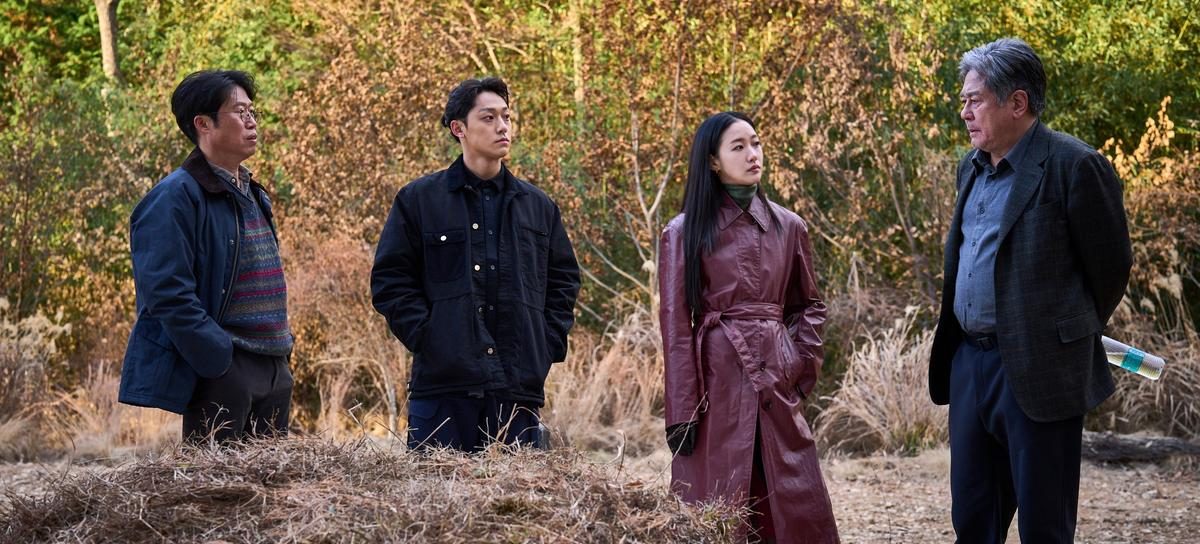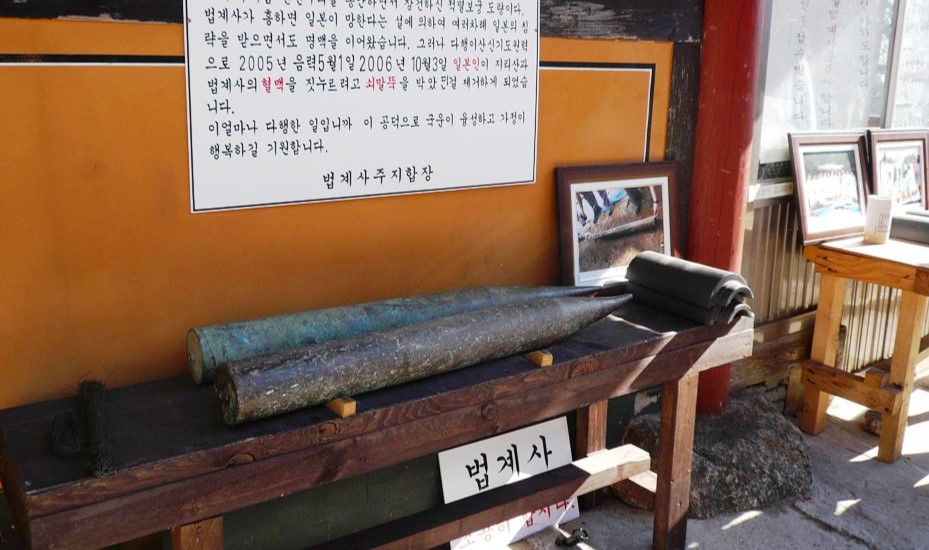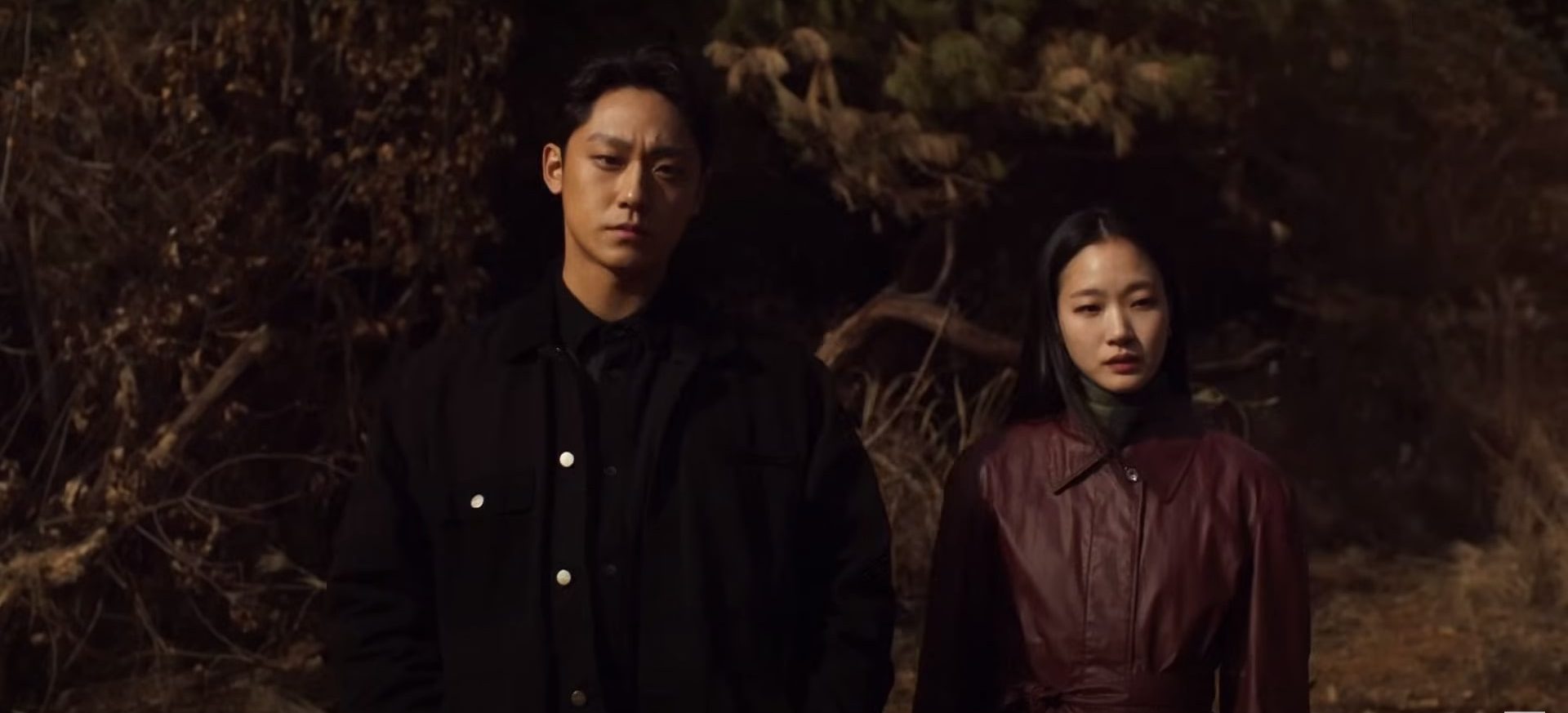A Jang Jae-hyun directorial, ‘Exhuma,’ or ‘Pamyo,’ weaves a tale of shamanism and supernatural horror in rural South Korea. Shaman Hwa-rim and Bong-gil are hired by a rich family to dispel a curse haunting them. Visiting the family’s home in the hills, the shamans ascertain that an angered ancestor is behind the curse and must be exhumed and buried elsewhere to be appeased. The sinister energy of the ancestor prompts Hwa-rim to involve Sang-deok, a Feng Shui master and undertaker Yeong-geu, to assist in the ritual exhumation.
However, an ill omen casts a shadow over the ritual, and rain prevents the family’s plans for the coffin’s cremation. When seeming grave robbers open the casket at night, they unleash a sepulchral horror upon them all. The film’s depiction of intricate shamanistic rituals, folklore, and South Korean history prompts us to dig deeper into its inspirations and origins.
Exhuma Combines Folklore with South Korean History to Personify Its Horrors
Jang Jae-hyun wrote ‘Exhuma,’ inspired by witnessing a grave exhumation and the shamanistic practices associated with it. The exhumation ritual is often done to remedy the wounds of the past, reminding Jae-hyun of the now-buried wounds suffered by South Korea as a nation. Thus, the film was developed with the dual narratives of the characters’ story of a family curse and the historical storyline involving Japan’s residual curse on South Korea. Also featured prominently in the film are the concepts of shamanism, Feng Shui, and urban legends, which were extensively studied by the writer-director as he penned the script.

Jae-hyun had initially been fascinated with the exhumation process as a child. When he happened to witness it by chance in later years, he was struck with the idea of building a haunting story around it. This led him down the path of extensive research, consulting real-life morticians, shamans, and Feng Shui masters while observing more than 15 exhumations. The idea of combining the exhumation storyline with national history came to him with a shocking event taking place during his study.
“One day, an undertaker (I was consulting for the film) called me in the early morning and I followed him to an exhumation site in a hurry because an immediate family member of the dead had a stroke. Surprisingly, there was a leak in the drainage and the coffin had water inside. So they performed the cremation with a torch on the spot,” he said in an interview. “That day, I could feel that the sentiment behind the ritual of ‘pay’ is about pulling out the past and removing it. If we consider our country’s land as a ‘person,’ it is a victim that has suffered many wounds. So, I thought we should ‘pamyo’ that.”
Pamyo is the South Korean word for exhumation, with Jae-hyun referencing the country’s occupation under Imperial Japan as one of the major wounds. Wishing to exhume such events and make them concepts driving his narrative, the writer-director dug deeper and came across a fascinating urban legend. During the early and mid-19th century, the Korean population prominently believed in the practices of Feng Shui or Pungsu-jiri. These involved consulting experts and traditions regarding the positioning of the houses, furniture, temples, graves, etc., to maintain harmony and bring good fortune. The associated practices of Feng Shui are profoundly intricate and overlap with shamanism and Taoism.

During the Japanese occupation between 1910 and 1945, the imperialist rulers were against such practices. A theory began to emerge that alleged that the Japanese had hammered iron rods along the country’s sacred mountain ranges, disrupting the flow of energies to their land. The urban legend came alive when a private mountain climbing club went on an expedition to Mount Bukhan, looking for the rods and discovered 27 of them in the early 1980s. While some argued that they had likely been placed in the mountains to mark a path, the news fanned the flames of long-held suspicions. 15 of the rods were donated to the Independence Hall of Korea.
In the film, the Japanese Samurai ghoul is shown buried with an iron sword in his body, acting like a large Feng Shui-disrupting iron rod himself. It is in order to keep his existence a secret that the Monk Kitsune advocated for the family’s ancestor to be buried on top of the Japanese relic. Additionally, the ancestor had been a traitor to his fellow citizens, siding with the Japanese for wealth. This is also in line with historical turncoats resented by the population for siding with Imperial Japan.
Thus, the first monster faced by the shamans is symbolic of the betrayal of their own people, and the second is a ghoul Samurai general who had killed 10,000 Koreans, an on-the-nose depiction of Imperial Japanese. Jang Jae-hyun channels the historical anger in South Korea against their oppressors and traitors into a subterranean narrative in ‘Exhuma.’ The writer-director carried out extensive research into the subject matter, practically witnessing and learning about the shamanistic rituals and Feng Shui. He combined this knowledge of folklore with traumatic elements of national history and blended it into a compelling horror thriller featuring traditional rituals, geomancy, and family intrigue.


You must be logged in to post a comment.